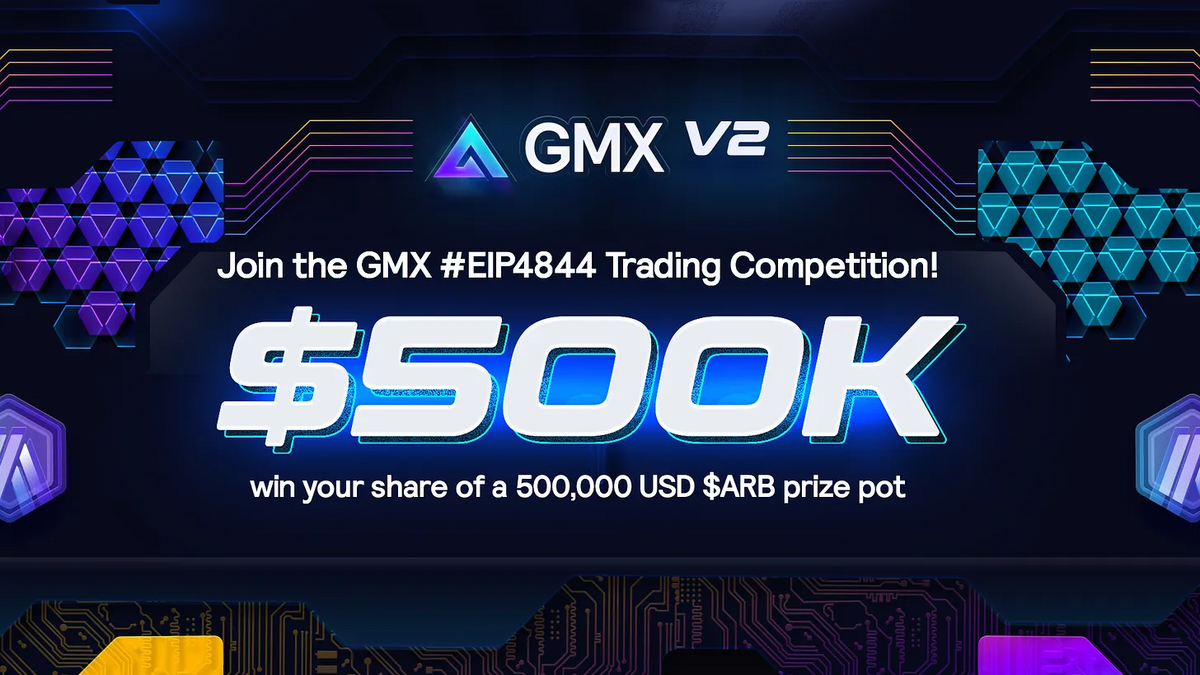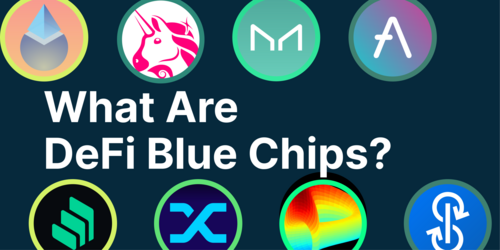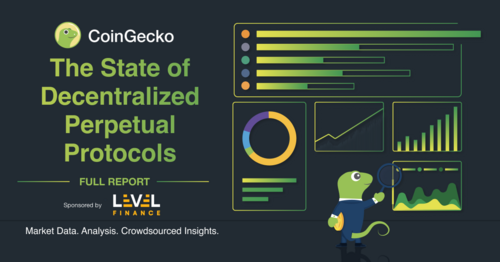Key Takeaways
-
DeFi yield involves participating in a DeFi protocol to earn crypto by providing liquidity to a pool.
-
One of the most attractive features of DeFi is its high yield, which, in some cases, has been made possible by unsustainable token emissions.
-
However, this unsustainable yield has resulted in a movement in favor of real yield, which is generated from revenue sources instead of token emissions.
-
GMX, Synthetix, and Dopex are some DeFi protocols that offer a real yield model.

Decentralized Finance, commonly known as DeFi, has been one of the most exciting developments in the blockchain space in recent years. The ability to offer and invest in financial services and products outside the traditional banking system has captured the imagination of investors and developers alike. One of the most attractive features of DeFi is its high yield, which has been made possible by innovative yield farming strategies. However, not all DeFi yield is created equal and some may be more unsustainable than others. This article will explore the concept of real yield in DeFi and why it matters.
What is DeFi Yield?
DeFi yield refers to the interest or return generated from participating in DeFi protocols. Yield farming, also known as liquidity mining, is a popular method of generating yield in DeFi. It involves staking or locking up assets in a smart contract in exchange for rewards in the form of tokens or fees generated by the protocol. Yield farming has become increasingly sophisticated, with new strategies such as flash loans and liquidity provisions creating more opportunities for yield generation.
The yield generated by DeFi protocols can vary significantly based on the protocol, the asset being used for liquidity provision, and market conditions. Some protocols offer fixed interest rates, while others have variable rates that are determined by the demand for liquidity. In addition to yield farming, other methods of generating yield in DeFi include providing collateral to lending platforms and participating in automated market makers (AMMs).
One of the benefits of DeFi yield is that it offers a way for investors to earn income on their assets without relying on traditional financial institutions. This can be especially attractive for investors looking for alternatives to low-yield savings accounts or volatile investment options such as stocks and cryptocurrencies.
However, it is important to note that DeFi yield generation comes with its own set of risks, including the potential for impermanent loss and smart contract vulnerabilities. As with any investment, it is important to thoroughly research and understand the risks before participating in DeFi yield farming or other yield generation methods.
How Does Yield Farming Work?
Yield farming involves participating in a DeFi protocol by providing liquidity to a pool. This is typically done by depositing two assets, such as ETH and USDC, into a liquidity pool, allowing users to trade between the assets with minimal slippage. As a liquidity provider, you are rewarded with a share of the trading fees generated by the protocol.
To understand how yield farming works, it is helpful to consider an example. Let's say you want to participate in a DeFi protocol that allows users to trade ETH and DAI. You decide to provide liquidity to the ETH-DAI pool by depositing an equal amount of ETH and DAI. The protocol will then issue you a share of the pool's liquidity as an LP token. This token represents your share of the liquidity pool, and you can use it to withdraw your deposits anytime.
When users trade ETH for DAI or vice versa on the protocol, they pay a small fee, typically 0.3% or less. These fees are then distributed proportionally to the liquidity providers in the pool based on their share of the liquidity pool. The fees earned from liquidity can be significant, especially for popular protocols with high trading volumes.
In addition to trading fees, some protocols offer incentives in the form of governance tokens. These tokens represent ownership in the protocol and allow holders to vote on decisions related to the protocol's development and direction. You can earn governance tokens by participating in DeFi protocols as a liquidity provider or purchasing them on a crypto marketplace.
To maximize yield from yield farming, it is important to consider various factors, including the protocol's trading volume, the fees charged, the value of the governance token, and the potential for impermanent loss when it comes to the assets deposited. Some yield farming strategies involve moving assets between multiple protocols to exploit the highest yields and lowest risks, and this complex process requires careful consideration of the risks involved and a deep understanding of the DeFi ecosystem.
How Does DeFi Pay Such High Yields?
The high yields offered by DeFi protocols are a result of several factors. Firstly, DeFi protocols can operate with lower overhead costs than traditional financial institutions. This allows them to offer more competitive yields to attract liquidity providers.
Secondly, DeFi protocols are built on decentralized networks, allowing more efficient capital allocation. This means that the capital locked up in DeFi protocols is put to work more effectively, generating higher yields.
Another factor contributing to the high yields in DeFi is the use of governance tokens. As mentioned, governance tokens represent ownership in a DeFi protocol and allow you to vote on its development and direction. The value of governance tokens can appreciate significantly if the protocol becomes successful, like COMP tokens, leading to higher returns for early adopters.
The Rise of Real Yield
DeFi protocols came up with extreme and unsustainable token emissions to fund the high returns, fueling more inflation. They compensated users with their native tokens that had limited use cases. These tokens have been mockingly labeled "useless governance tokens."
Though protocols that leveraged the above strategy for bootstrapping succeeded in the short term, but most of them found it unsustainable in the long run for various reasons. First, the strategy thrives when the token demand rises comparably with the new emissions. But this is not always the case since most governance tokens have high emission schedules, making them hyperinflationary. Besides, their demand ends up falling because of little or no utility, and their prices shrink significantly.
Second, most DeFi yield farmers remained uncommitted to projects – they devised various farming strategies involving jumping from one protocol to another, looking for the highest yield. Besides, most farmers dumped the governance tokens immediately after earning to secure profits. As such, projects had to consider a better strategy, giving rise to real DeFi yield.
What is Real DeFi Yield?
Real DeFi yield is a yield farming metric that is gaining a lot of popularity. It functions like a stock dividend, where you invest some tokens in a DeFi protocol and receive a certain percentage of its revenue. What differentiates real DeFi yield from what projects have been leveraging since 2020 is the "real" part. Simply put, the real yield is not based on unsustainable token emissions and other manipulative strategies.
Like other sustainable ventures, a protocol leveraging the real yield strategy should earn more than it spends. It should profit more from revenue than token emissions and operational expenses.
The real yield strategy enables you to generate income with less worry concerning token value and other common risks of DeFi yield farming, as instead of receiving rewards in a protocol’s tokens, which may be printed out of thin air, users receive a share of protocol revenue in established cryptocurrencies like ETH. By paying out a portion of revenue to users, it pushes the industry to release projects that provide real value to users.
DeFi Protocols that Pay Real Yield
Below are three popular DeFi protocols that pay real yield.
GMX

GMX is a DeFi protocol that enables users to earn yield on their digital assets by providing liquidity to its decentralized exchange (DEX). The GMX DEX is a hybrid exchange combining an AMM's features and a limit order book. GMX users can earn yield by providing liquidity to the exchange through token pairs.
Since its launch in 2021, the protocol has quickly established a high level of liquidity and experienced extensive growth in trading volume. GMX's success can be accredited to its unique revenue-sharing model consisting of two native tokens: GMX and GLP.
The GLP index estimates GMX DEX's trading potential, while the GMX token is used for voting and staking. As of time of writing, the protocol offers an annual percentage rate (APR) of 4.49% for staking GMX tokens and 10.23% for holding GLP tokens, although these numbers are updated weekly based on the fees collected for the week. Besides, you receive a boosted yield during your vesting period. 70% of the revenue is paid to GLP holders, while GMX stakers get the other 30% paid out in ETH.
Synthetix

Synthetix is a DeFi protocol that enables users to earn yield by providing liquidity to its decentralized synthetic asset exchange. The protocol allows users to trade synthetic assets, such as synthetic USD and synthetic Bitcoin, without a centralized intermediary.
Synthetix succeeded more after revamping its business model to offer real yields to SNX holders. It pays yields of approximately 53%. The yields are generated from emissions-based staking rewards distributed in its native token and sUSD stablecoins accrued from trading fees on the Synthetix exchange. As such, Synthetix can be considered a hybrid DeFi yield offering.
Dopex

Dopex is a DeFi protocol that enables users to earn yield by providing liquidity to its decentralized options trading platform. The platform allows users to trade options on various underlying assets, such as ETH and BTC.
Dopex provides Single Staking Option Vaults, which work like conventional crypto staking. The SSOVs let users lock up their assets for a certain time period when they supply option liquidity to an option vault, and earn yield from the staked assets as they collect premiums from option purchases. However, do note that a higher APR may come with a higher risk, as option buys may claim some of your tokens at the end of the epoch if the token price is higher than the strike price.
The Dopex protocol also collects fees from its products, which are then distributed to DPX token holders.
Conclusion
DeFi provides investors multiple passive income opportunities – from staking to liquidity mining to options and perpetual trading. Real yield is an improvement to the DeFi offerings after a rough storm that saw interest in governance tokens decline significantly. It offers a more practical approach to yield farming instead of unsustainable token emissions and other manipulative strategies. However, real yield is just one statistic to consider when you're trying to decide in whether you should invest in a protocol. After all, while real yield does appear more sustainable, paying out a portion of revenue to users also means that protocols have less capital to invest in their projects.
This article is for educational purposes only and should not be taken as investment advice. Always do your own research before investing in any cryptocurrencies or protocols.

Josiah is a tech evangelist passionate about helping the world understand Blockchain, Crypto, NFT, DeFi, Tokenization, Fintech, and Web3 concepts. His hobbies are listening to music and playing football. Follow the author on Twitter @TechWriting001





 Or check it out in the app stores
Or check it out in the app stores
